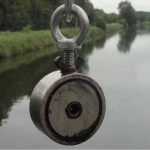Not so very long ago, aquaculture was viewed as a supplement to the harvesting of wild fish, and a generally small-scale one at that. Things have changed quite quickly, with fish farms all over the world now catering to larger and steadily increasing shares of the world’s demand for piscine protein.
One of the reasons for this has been that the fish farming industry has improved by leaps and bounds over the course of the last decade. A quick look at three of the most important ways fish farming has advanced will make it clear that plenty of progress has been made, with much more still to come:
1. Fish Farmers Have Become More Ambitious
As the Global Salmon Initiative has reported, modern commercial fish farming got its start many years ago in fairly humble fashion. The first salmon farms opened up about half a century ago, but were small-scale operations that were sometimes little more than curiosities.
The last decade, though, has seen far larger farms opening up all over the world, along with lots of supporting infrastructure. The World Wildlife Foundation calls the farming of salmon “the fastest growing food production system in the world,” and that is only one segment of the industry.
This is good news for everyone who enjoys eating fish and even for many who have not yet had much of a chance to do so. Farmed fish tends to be quite a bit less expensive than the wild-caught kind, making for an affordable source of protein for billions of people worldwide.
Prices have come down so much thanks partly to the efficiency inherent in farming. On the other hand, farmers who have set their sights higher and higher over the course of the last ten years have boosted their production to help out, as well. With leading fish farmers now thinking about how to serve people who have not yet even been born, ambition will lift the industry even higher.
2. Fish Farms Have Become Greener
Activists have occasionally questioned whether fish farming is an environmentally sound activity. It is true that some farms of the past ended up adding to the overall burden on the environment instead of lightening it.
Over the last decade, though, things have improved greatly. Environmentally responsible feed based on plants, for example, has largely supplanted fodder made from fishmeal. Improved disease management techniques have also helped keep medications from tainting waters where fish farms are located. Farmers have even gotten better at capturing and controlling the waste generated by fish being fattened up for the market.
3. Fish Farmers Have Become More Flexible
It takes a lot of commitment and a fair amount of investment to open and operate a commercially viable fish farm today. In the past, that sometimes saw farms failing to respond to changing market conditions or consumer preferences, but that is no longer an issue.
As farmers have become more sophisticated and adept at raising fish, they have become better at adapting. As a result, the last ten years have seen fish farmers moving operations closer to their customers, for example, to take advantage of all the associated benefits.
Many More Advances Await
As one of the most dynamic industries around, aquaculture is sure to keep impressing observers. The fish farming industry has made remarkable sorts of progress over the last ten years and will undoubtedly keep doing so for a long time to come. With the demand for animal-based protein sure to keep rising steadily, that will be good news for people everywhere.







